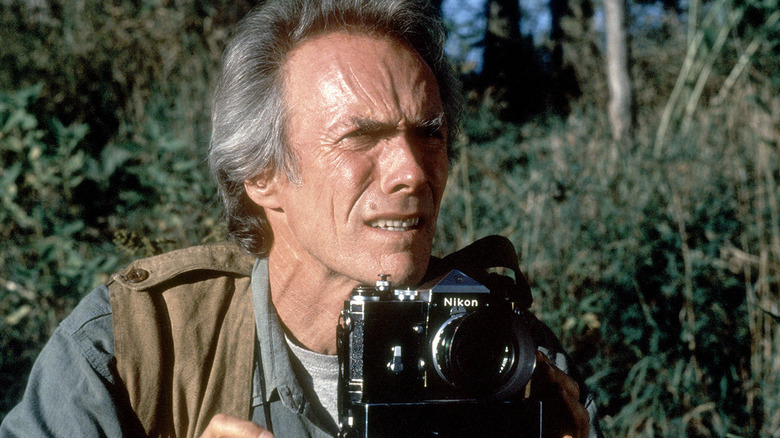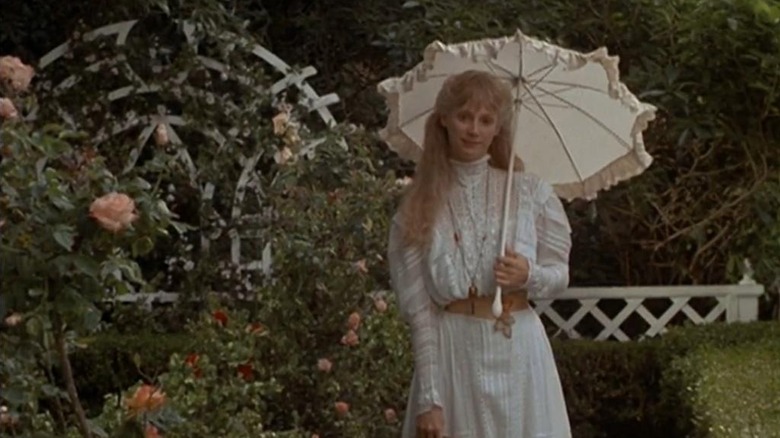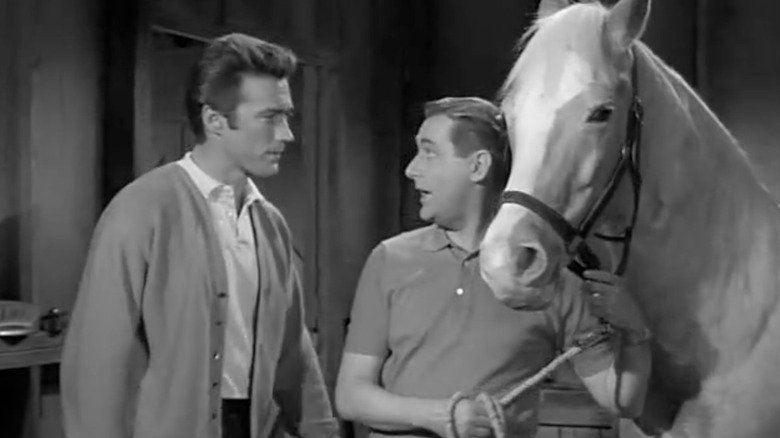Clint Eastwood And Steven Spielberg Once Teamed Up For A Classic, Influential TV Show
Steven Spielberg is often regarded for his invaluable contributions to cinema, but there's an argument to be made for his place in television. After his short film "Amblin'" made waves with Sid Sheinberg, the former head of Universal, Spielberg spent the late '60s and early '70s directing a number of shows including "Columbo" and "Night Gallery." Though his focus would cater toward the glamour of big screen adventures, he never lost sight of the medium that gave him the opportunities to flex his chops. Most of Spielberg's later television career consisted of executive producer credits, but there were some shows that he had an active hand in developing, with one that made a considerable splash in the mid '80s.
"Amazing Stories" was Spielberg's foray into the world of anthology television, as each episode spanned the genre-scope of fantasy, science fiction and horror. Invoking the series will undoubtedly trigger the whimsical John Williams theme song that should come as no surprise for those who tuned in. Despite only lasting for two seasons, it left a huge impact in its wake. The Emmy award-winning series recruited all manner of filmmaking greats to do an episode of their own including Martin Scorsese, Brad Bird, and Danny DeVito. One name among the directorial roster that came as a surprise was none other than Clint Eastwood.
Eastwood and Spielberg are two names you wouldn't typically expect to see together in a creative manner, but in 1985, the pair collaborated for the first and last time on an episode of "Amazing Stories" that sees the former reconcile with his sweeter side.
Eastwood directed a romantic ghost story for Amazing Stories
Between his filmmaker duties on "Pale Rider" and "Heartbreak Ridge," Eastwood directed the "Amazing Stories" episode entitled "Vanessa in the Garden," which Spielberg wrote. Harvey Keitel stars as Byron Sullivan, an early 20th century painter who can produce artistic magic with the stroke of his paintbrush. Of everything he's painted, few were quite as beautiful as the ones featuring his wife Vanessa (Sondra Locke). A year after Byron and Vanessa consummated their marriage with a honeymoon in Paris, the world is their oyster. Byron is given great news by his friend/agent Teddy (Beau Bridges) that he's booked an exhibition solely for his work.
The good times don't last long, however, on account of a lightning bolt that spooks the horse attached to their carriage, sending them down a hill and killing Vanessa in the process. Byron falls into the kind of deep depression that leads him to burn his paintings. He finds the one he painted of Vanessa in their garden and tries to lay waste to it, but the match goes out. When Byron wakes up the next morning, he discovers that she's been removed from the painting and is standing outside in the garden. He tries to run to her, but she disappears. As Byron starts seeing her visage around the house, it reinvigorates his passion for painting again.
"Vanessa in the Garden" sees Eastwood and Spielberg embracing the romantic nature of ghost stories. By the end, Byron not only gets back to doing what he loves most, but is able to further commune with his wife by exclusively painting the couple doing things together.
How fitting for Eastwood to direct a story about how beautiful his real-life significant other is, even if that relationship would take a public nosedive in the following years. To makes matters even more dramatic, Locke, who was someone Eastwood was already having an affair with while married to Maggie Johnson, mentions in her autobiography "The Good, the Bad and the Very Ugly" that her partner had her share a scene in this episode with Jamie Rose, an actress Eastwood met on the set of "Tightrope" — whom he was also having an affair with.
Eastwood had an interesting television career
Eastwood, much like Spielberg, is another one of cinema's most recognizable figures who also has a special connection to television — even if on opposite ends. Throughout the early stages of his career, Eastwood did what any upcoming actor would do and found himself booking a whole bunch of guest spots on shows like "Highway Patrol," "Death Valley Days," "Maverick" and "Alfred Hitchcock Presents." And who could forget the episode of "Mister Ed" where he plays a version of himself opposite the titular talking horse?
Most viewers at the time knew Eastwood, however, as cattle poker Rowdy Yates for over 217 episodes on the hit CBS western series "Rawhide." Though he describes getting cast as a fluke, it was the very thing that led to his movie star career with Sergio Leone's "Dollars" trilogy. After Rawhide went off the air in 1965, Eastwood never did another narrative television guest spot ever again.
Eastwood would only deviate from his directorial duties two more times with the final episode of Scorsese's PBS documentary series "The Blues," and Diana Krall's 1999 music video "Why Should I Care" for the release of his film "True Crime." It's surprising Eastwood didn't direct more television considering the quick turnaround schedule he maintains on his film set correlates with the quick production of television.


